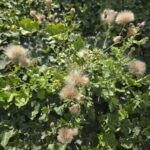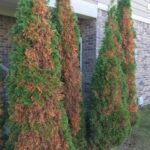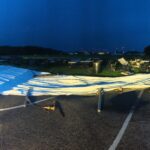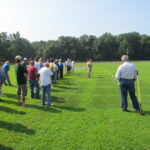Resources for landscapes and gardens in the Midwest
Search Results: weed
Planting may not be the first chore that comes to mind when considering the fall garden, but as Purdue Urban Forestry Specialist, Ben McCallister mentioned in the last issue, it’s an excellent time to install a new tree1. However, trees aren’t the only thing that can be added to the[Read More…]
Read MoreHelp IR4 Help You! The IR-4 Project provides the research necessary for pesticide registration on ornamental plants. IR4 operates as a unique partnership between the U.S. Department of Agriculture (USDA) – both the National Institute of Food and Agriculture (NIFA), the Cooperative State Research Education and Extension Service (CSREES),[Read More…]
Read MoreThe final month of summer is here, meaning children are returning to school and pools will be closing soon. The end of summer also signifies shorter days, cooler temperatures and a nearing finish line for the long marathon run by our cool season lawns. Summer is tough on the fescues,[Read More…]
Read MorePoison hemlock was introduced to North America as a garden/ornamental plant. It is a native of Europe, and it is a member of the Apiaceae (parsley) family. Purdue experts Bill Johnson and Marcelo Zimmer wrote about poison hemlock in a Purdue Pest & Crop newsletter. They wrote that poison hemlock[Read More…]
Read MoreFor some, the term “shade garden” may be an oxymoron. When imagining a garden, most will think of a sunny area filled with flowering plants. So, it’s not surprising that gardeners would often fill shady areas with a hardy, evergreen ground cover and never look back. However, ornamental shade gardens[Read More…]
Read MorePeonies are a common and favored landscape plant in Indiana. Despite their famed attribute of being easy to care for, some annual upkeep will ensure peonies continue to beautifully bloom year after year. Depending on the species and cultivar, peonies will bloom from late spring to early summer. Peonies were[Read More…]
Read MoreSpring in all its wild weather swings, plant growth and flowering glory has arrived, and along with it, the chore of mowing the lawn. Many decry the labor and monotony, but evidently some do enjoy the practice, as a new video game allows one to mow a virtual yard even[Read More…]
Read MoreIt’s that wonderful time of year again where temps are rising, life is coming back into the landscape, and people are thinking about how to improve the urban canopy around them. Well, maybe not that specifically, but we have the urge to plant trees. Whether it’s for Earth Day or[Read More…]
Read MoreSign-up to receive email news and alerts from Purdue Landscape Working Group:


















